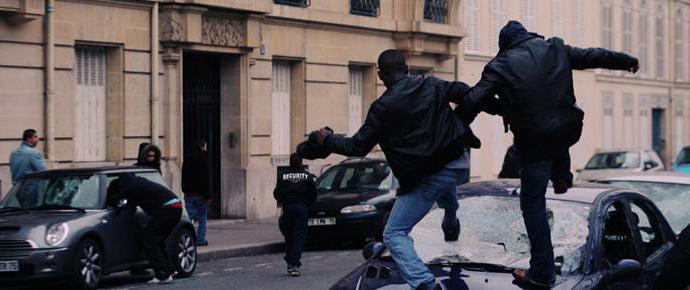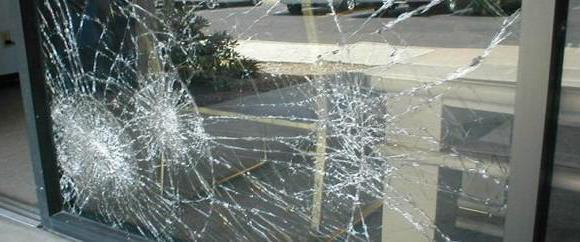Human behavior can be both constructive and destructive. Creating is much more difficult than breaking, breaking or spoiling. However, it is these actions that often become a way of expressing accumulated emotions. It is enough to open a newspaper or news site to find fresh examples of vandalism, i.e. desecration, damage to property. Even criminal liability and harsh sanctions do not stop people.
Simple composition
Responsibility for vandalism (damage to property in public places and transport, desecration of buildings and structures) is provided for in art. 214 of the Criminal Code. With a simple composition, the punishment implies, as a rule, a fine of up to 40 thousand rubles, or in the equivalent of the convict’s salary (his other earnings) for a period of up to 3 months. As an alternative, up to 1 year of correctional labor, or up to 3 months of arrest, can be assigned.
Qualified staff
Qualifying signs of vandalism (part 2 of article 214 of the Criminal Code of the Russian Federation) include:
- commission of an act by prior arrangement (conspiracy) by a group of persons;
- commission of an act based on racial, political, ideological, religious, national hatred, or hostility towards a certain social group of people.
In this case, one of the following sanctions applies to the convicted person: up to 3 years of restraint or imprisonment or forced labor.
Subject, object and objective side
The danger of vandalism to society lies in the fact that its actions in a rude manner violate public order, moral standards, peace of citizens, and also damage property. An additional object of a criminal act is property relations.
The objects of vandalism (Article 214 of the Criminal Code of the Russian Federation), firstly, are constructions built by people and buildings that differ in their functional purpose (residential, warehouse premises intended for holding cultural events or sports), as well as being in individual use, public or collective (bridges, pipelines, stadiums, etc.). Secondly, this property is located in public places, including in transport (glass, seats, lighting, walls, doors, windows, toilets, intercoms, etc.).
For example, a demonstrative burning of books to protest on the threshold of the building of the Ministry of Education, as a result of which the staircase was damaged and material damage was caused to the state.
The objective side is always actions that offend public morality. It manifests itself in desecration or corruption.
The corpus delicti is formal. It is recognized as completed from the moment the actions specified in part 1 of the analyzed norm have been fulfilled.
Desecration

The legislator interprets desecration as actions disfiguring constructions and public buildings, or their separate parts and inflicting insult to public morality. This can be expressed in applying obscene graffiti to walls and other surfaces, drawings, cynical inscriptions, obscene words, sticking up posters, poems, reproductions of immoral content, pollution of objects with sewage and coloring substances, damage to cultural and historical monuments, as well as their individual parts, mockery over universally recognized historical and spiritual values, feelings of believers.
An example of vandalism is the actions of several young people from Krymsk. They wrote down with a marker a tank mounted on the site of the mass grave of soldiers who died in the Second World War. The text had a negative content and related to the Red Army and people of Jewish nationality. Stickers with a swastika were pasted on the monument itself.
It is worth mentioning that desecration of graves is qualified according to another criminal norm - Art. 244 of the Criminal Code.
Actions that were not aimed at insulting morality in society do not constitute a crime. In particular, drawing obscene words, drawings, images of birds, nature or animals, decent slogans and sayings on the fence of an abandoned building.
Damage to property
Corruption is damage, destruction or destruction of property located in public places or vehicles. In other words, rendering it unusable (partial or complete) for further use for its intended purpose.
An example of vandalism through property damage is the destruction by one of the inhabitants of a village in the Tver region of a plaster monument of Lenin. The man, being drunk, demolished the head of the monument to the leader of the proletariat with a sledgehammer. The court sentenced him to a year of restriction of freedom.
If under an act of vandalism there is a deliberate destruction of property or its damage in an amount assessed as large or significant, then it is qualified in conjunction with Art. 167 of the Criminal Code.
Subject and subjective side
The subject of vandalism is a natural person over 14 years old, sane. The subjective side is direct intent. The offender is fully aware that he commits unlawful acts. Motives of hooliganism and vandalism, as a rule, are similar and are expressed in disrespect for society, neglect of public interests and norms, mischief. Differentiation of the structures is carried out at the place of crime and on the subject.
Example No. 1 from practice
The young man, being drunk, being in the entrance of an apartment building, acting deliberately and violating public order in a gross form, sprayed with spray paint and spray paint and applied inscriptions and drawings. Graffiti on the wall was obscene and occupied its significant surface. Thus, the company serving the high-rise building suffered damage in the amount of 43,780 rubles.
The actions of the convict were qualified according to part 1 of article 214. The court sentenced him to compulsory labor lasting 150 hours.
Example 2 from practice
Two young people, being near the supermarket at night, decided to go into it to buy cigarettes. However, the guard stopped the men, explaining that the store was closed. On this basis, the accused had a verbal conflict with him. Frustrated, they walked together to the door of the supermarket. The accused had a criminal intent to damage the glass in the doorway and window. Aware of the nature of their actions, the fact of being in a public place and openly neglecting social norms, each of them was hit with a fist on the window panes. As a result, two windows were broken. Thus, the supermarket was damaged in the amount of 30 thousand rubles. The perpetrators were sentenced to 4 months in prison without restriction. The punishment is recognized conditional with a trial period of 6 months.

Examples of vandalism are much more common than we can imagine - these are obscene inscriptions in porches and buses, and broken lanterns in the park, and overturned garbage cans.